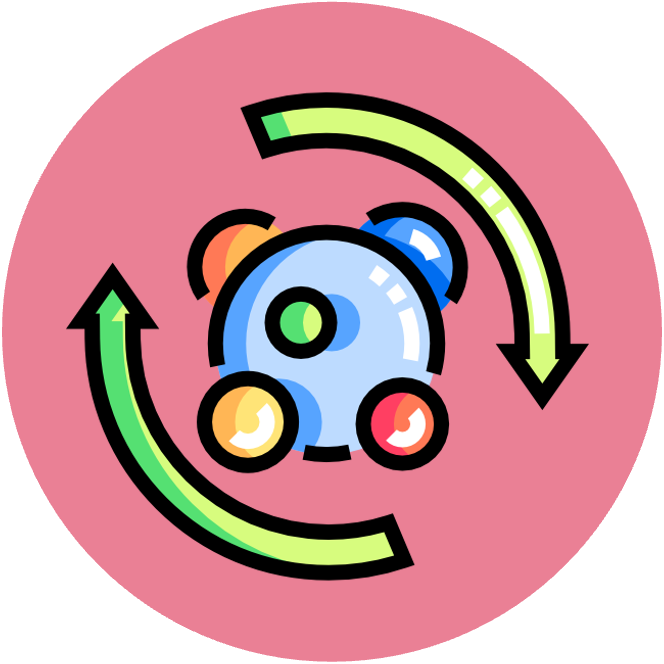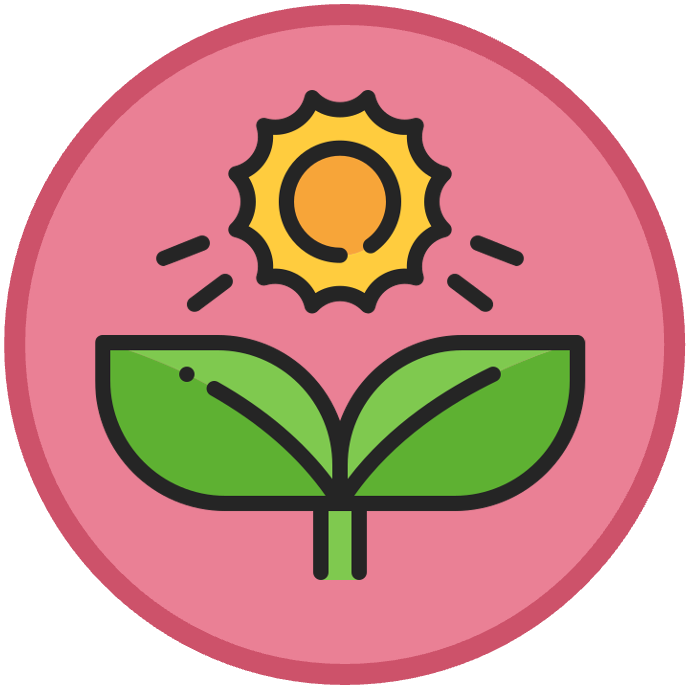

Photosynthesis (AHL)
AHL Content Statements
-
C1.3.9
Photosystems as arrays of pigment molecules that can generate and emit excited electrons
-
Students should know that photosystems are always located in membranes and that they occur in cyanobacteria and in the chloroplasts of photosynthetic eukaryotes. Photosystems should be described as molecular arrays of chlorophyll and accessory pigments with a special chlorophyll as the reaction centre from which an excited electron is emitted.
-
C1.3.10
Advantages of the structured array of different types of pigment molecules in a photosystem
-
Students should appreciate that a single molecule of chlorophyll or any other pigment would not be able to perform any part of photosynthesis.
-
C1.3.11
Generation of oxygen by the photolysis of water in photosystem II
-
Emphasize that the protons and electrons generated by photolysis are used in photosynthesis but oxygen is a waste product. The advent of oxygen generation by photolysis had immense consequences for living organisms and geological processes on Earth.
-
C1.3.12
ATP production by chemiosmosis in thylakoids
-
Include the proton gradient, ATP synthase, and proton pumping by the chain of electron carriers. Students should know that electrons are sourced, either from photosystem I in cyclic photophosphorylation or from photosystem II in non-cyclic photophosphorylation, and then used in ATP production.
-
C1.3.13
Reduction of NADP by photosystem I
-
Students should appreciate that NADP is reduced by accepting two electrons that have come from photosystem I. It also accepts a hydrogen ion that has come from the stroma. The paired terms “NADP and reduced NADP” or “NADP+ and NADPH” should be paired consistently.
-
C1.3.14
Thylakoids as systems for performing the light-dependent reactions of photosynthesis
-
Students should appreciate where photolysis of water, synthesis of ATP by chemiosmosis and reduction of NADP occur in a thylakoid.
-
C1.3.15
Carbon fixation by Rubisco
-
Students should know the names of the substrates RuBP and CO2 and the product glycerate 3-phosphate. They should also know that Rubisco is the most abundant enzyme on Earth and that high concentrations of it are needed in the stroma of chloroplasts because it works relatively slowly and is not effective in low carbon dioxide concentrations.
-
C1.3.16
Synthesis of triose phosphate using reduced NADP and ATP
-
Students should know that glycerate-3-phosphate (GP) is converted into triose phosphate (TP) using NADPH and ATP.
-
C1.3.17
Regeneration of RuBP in the Calvin cycle using ATP
-
Students are not required to know details of the individual reactions, but students should understand that five molecules of triose phosphate are converted to three molecules of RuBP, allowing the Calvin cycle to continue. If glucose is the product of photosynthesis, five-sixths of all the triose phosphate produced must be converted back to RuBP.
-
C1.3.18
Synthesis of carbohydrates, amino acids and other carbon compounds using the products of the Calvin cycle and mineral nutrients
-
Students are not required to know details of metabolic pathways, but students should understand that all of the carbon in compounds in photosynthesizing organisms is fixed in the Calvin cycle and that carbon compounds other than glucose are made by metabolic pathways that can be traced back to an intermediate in the cycle.
-
C1.3.19
Interdependence of the light-dependent and light-independent reactions
-
Students should understand how a lack of light stops light-dependent reactions and how a lack of CO2 prevents photosystem II from functioning.
-
B2.2.5
Adaptations of the chloroplast for photosynthesis
-
Include these adaptations: the large surface area of thylakoid membranes with photosystems, small volumes of fluid inside thylakoids, and compartmentalization of enzymes and substrates of the Calvin cycle in the stroma.



